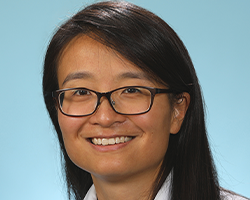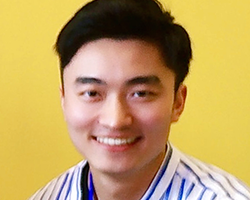Learning physician burnout from electronic health record activities
Interdisciplinary team develops deep learning model to predict burnout from electronic health record logs

Emotional exhaustion and lack of empathy are signs of occupational burnout, which affects more than half of those who work in health care. While this burnout is a significant public health problem that has effects on providers, health care systems and patients, there are few effective ways to screen for it or to target interventions.
Washington University in St. Louis researchers from computer science, informatics and medicine have developed the first end-to-end deep learning framework to predict physician burnout from automatically generated electronic health record activity logs. Using such a framework to distill this massive amount of data would lead to digital phenotyping of physicians experiencing burnout and potentially determine ways to prevent it in the future, the researchers say.
Chenyang Lu, the Fullgraf Professor in the McKelvey School of Engineering, led an interdisciplinary team of researchers to develop this framework — the Hierarchical burnout Prediction based on Activity Logs, or HiPAL — which they tested with data from the activity logs of 88 resident physicians of Barnes-Jewish Hospital and fellows at Washington University School of Medicine. The findings from their research are being presented at the ACM SIGKDD Conference on Knowledge Discovery and Data Mining.
Electronic health records must maintain a log of all activity by users, which includes logging in, reading reports, typing notes and reviewing laboratory tests, among nearly 2,000 other actions. Each provider generates between 1,000 and 8,000 actions per shift and up to 90,000 actions per month, creating millions of data points. Those actions become a sort of signature of a user’s concentration, focus and behavior patterns, said Sunny Lou, MD, PhD, an instructor in the Department of Anesthesiology at the School of Medicine.
Physicians spend considerably long times working on electronic health records to document and manage clinical activities, said Thomas Kannampallil, associate professor of anesthesiology and associate chief research information officer at the School of Medicine and associate professor of computer science & engineering in the McKelvey School of Engineering.
“These logs can be used to measure workload and tell us how much time one spends on various tasks in an electronic health record, when they perform those tasks, and more,” said Lu, a professor of computer science & engineering. “If we could predict burnout based on this information readily available in the electronic health record, our model could be deployed in most hospitals and predict physician burnout in an unobtrusive and timely fashion.”
The “gold standard” way to obtain information on burnout has been through surveys given to clinicians. However, many clinicians don’t complete the surveys because they are too busy or are not comfortable revealing that kind of information, Lou said.
In previous research, Lou and the team showed a connection between workload and burnout — the heavier the workload, the more likely the clinician is to be experiencing burnout. The team then developed a standard machine learning model that relied on predefined features extracted from the activity logs, including how many hours spent working, how many notes were made, how many reports were read and other activities. However, this earlier model requires the features to be manually defined based on domain knowledge, a challenging task given the complex correlations between workload patterns and burnout. In contrast, the new HiPAL model employs deep learning to directly learn from the raw activity logs and predict burnout.
“We let the model learn the most important connections itself without human-defined features,” said Hanyang Liu, a third-year doctoral student in Lu’s lab and first author on the paper. “The deep model can discover sophisticated patterns in the log and delivers higher predictive performance than standard machine learning models with defined features. The downside is that because the patterns the model learns are sophisticated, they require model interpretation techniques to explain the predictions.”
Lu compared the team’s model with the way deep learning understands articles.
“The HiPAL framework first models the clinical actions and associated timestamps and transforms this raw content into a representation the neural networks can understand, a process called activity embedding,” he said. “A low-level model then aggregates short-term activities into daily activity measures, followed by a high-level model that aggregates daily activity measures into monthly activity measures to capture the long-term dynamics of physician workflows.” Lu said. “At a high level, the way HiPAL processes activity logs is analogous to how a natural language processing model processes an article. HiPAL models every action like a word, every day like a sentence, then the entire month as a document.”
Overall, the team is very optimistic about the potential applications of HiPAL in health care and plans to conduct further research and validation before introducing it for clinical use.
Liu H, Lou SS, Warner BC, Harford DR, Kannampallil T, Lu C. HiPAL: A Deep Framework for Physician Burnout Prediction Using Activity Logs in Electronic Health Records. Association for Computing Machinery SIGKDD Conference on Knowledge Discovery and Data Mining, Aug. 14-18. DOI: 10.1145/3534678.3539056
Funding for this research was provided by the Fullgraf Foundation and the Washington University/BJC HealthCare Big Ideas Healthcare Innovation Award. Sunny S. Lou was supported by NIH 5T32GM108539-07






